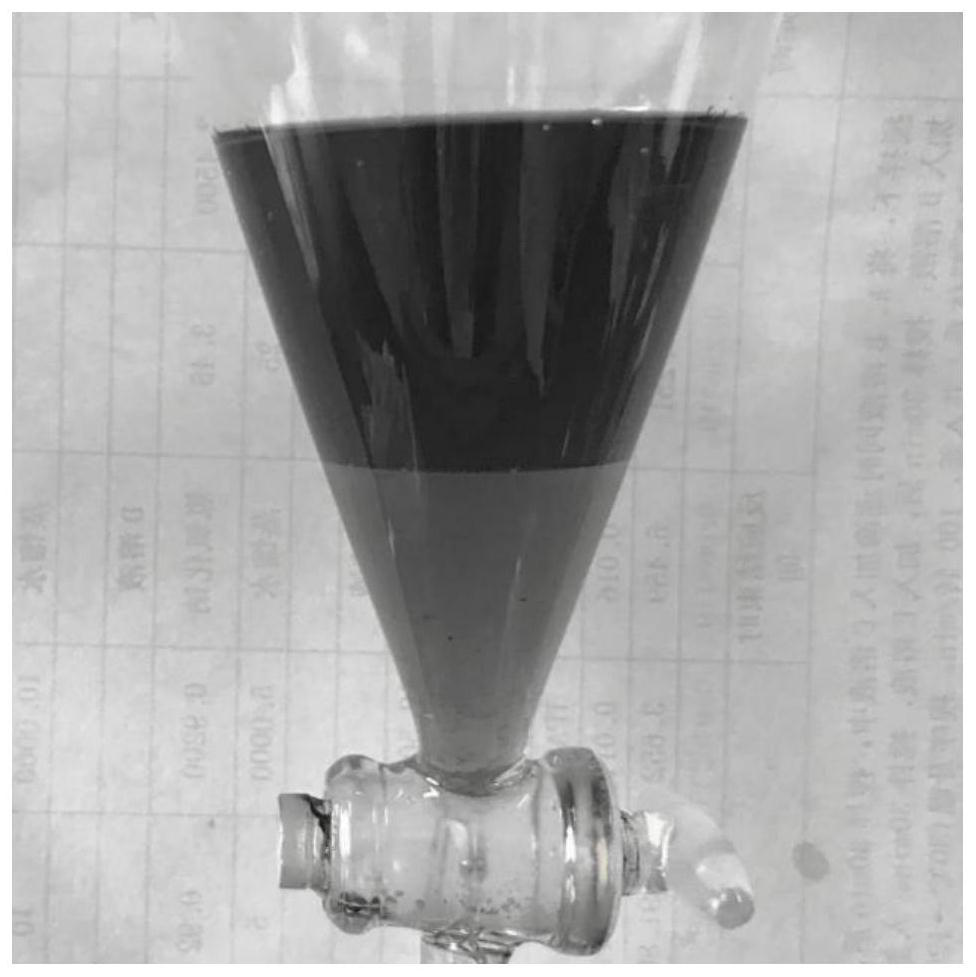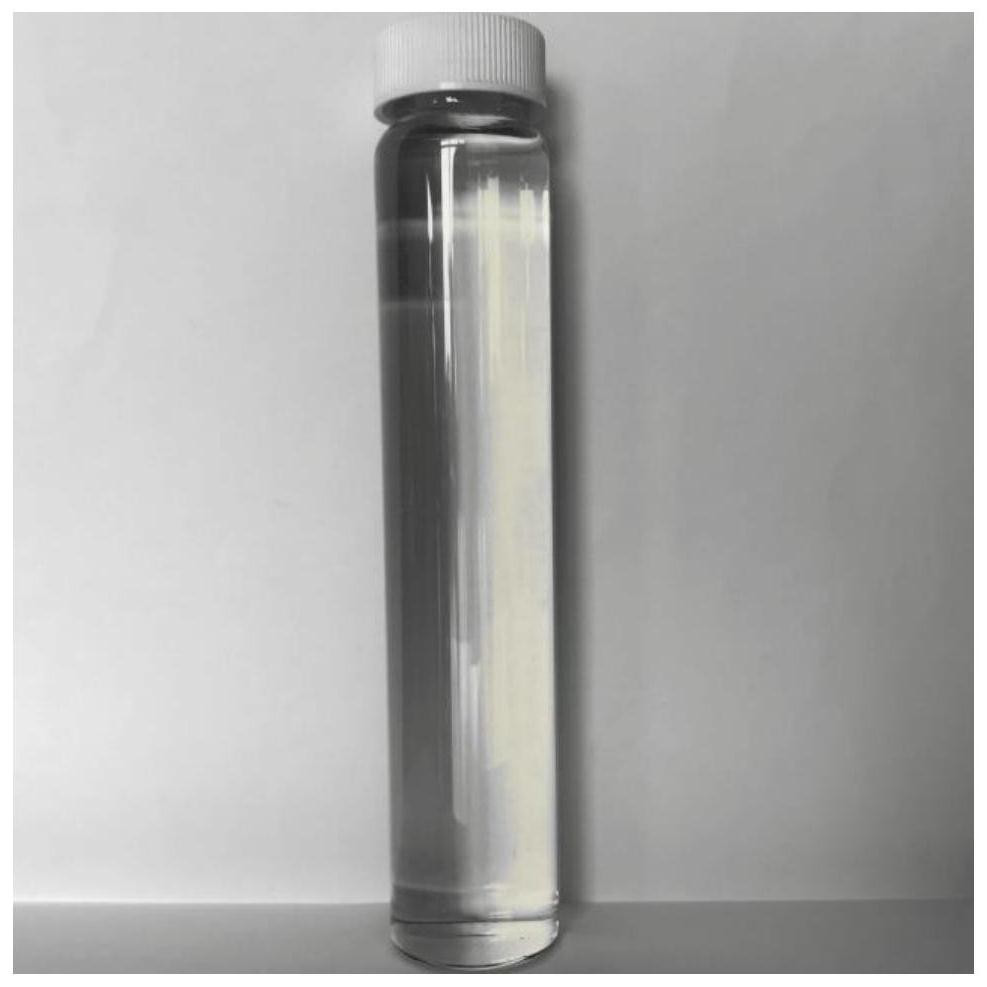Method for synthesizing methyl methoxyacetate through carbonylation of formaldehyde
A technology of methyl methoxyacetate and carbonylation, applied in chemical instruments and methods, preparation of organic compounds, preparation of carboxylic acid esters, etc., can solve problems such as difficulty in product separation, corrosion of devices by sulfuric acid, and achieve product yield High, no corrosion reaction equipment, the effect of saving production costs
- Summary
- Abstract
- Description
- Claims
- Application Information
AI Technical Summary
Problems solved by technology
Method used
Image
Examples
Embodiment 1
[0029] 1. Catalyst treatment
[0030] Weigh 0.459 g (0.5 mmol) of tris(triphenylphosphine)rhodium carbonyl hydride and add it into 44 g of methyl tert-butyl ether, and ultrasonically disperse for 1 hour to obtain a uniform light yellow liquid.
[0031] 2. Carbonylation reaction
[0032] Put the above homogeneous mixture in a 100mL stainless steel autoclave, add 7.5g of acetic acid, 6.1g of water, and 7.5g of paraformaldehyde (0.25mol, CAT / HCHO=0.2mol%) in sequence, seal the reactor, and replace the reactor with CO Air was injected 3 times, high-pressure CO was introduced to 8MPa, and the reaction was carried out at 110°C for 3 hours under vigorous stirring. After the reaction, the reactor was cooled to room temperature, all the reaction solution was taken out and placed in a separatory funnel, and allowed to stand until layers were separated. Such as figure 1 As shown, the liquid is divided into upper and lower layers, and the lower layer liquid is filtered through a microp...
Embodiment 2
[0037] 1. Catalyst recovery
[0038] The upper layer of the liquid after the carbonylation reaction in Example 1 was taken out to obtain a homogeneous mixture of catalyst and solvent, which was sealed and set aside.
[0039] 2. Carbonylation reaction
[0040] Put the above homogeneous mixture in a 100mL stainless steel autoclave, add 7.5g of acetic acid, 6.1g of water, and 7.5g of paraformaldehyde (0.25mol, CAT / HCHO=0.2mol%) in sequence, seal the reactor, and replace the reactor with CO Air was injected 3 times, high-pressure CO was introduced to 8MPa, and the reaction was carried out at 110°C for 3 hours under vigorous stirring. After the reaction, the reactor was cooled to room temperature, all the reaction solution was taken out and placed in a separatory funnel, and allowed to stand until layers were separated. Such as figure 2 As shown, the liquid is divided into upper and lower layers, and the lower layer liquid is filtered through a microporous membrane to obtain a ...
Embodiment 3
[0046] 1. Catalyst treatment
[0047] Weigh 0.131 g (0.5 mmol) of rhodium dicarbonyl acetylacetonate and add it into 82 g of ethyl tert-butyl ether, and ultrasonically disperse for 1 hour to obtain a uniform light yellow liquid.
[0048] 2. Carbonylation reaction
[0049] Put the above homogeneous mixture in a 100mL stainless steel autoclave, add 7.4g of propionic acid, 6.1g of water, and 9.0g of paraformaldehyde (0.1mol, CAT / HCHO=0.5mol%) in sequence, seal the autoclave, and replace the autoclave with CO Insulate the air three times, pass high-pressure CO to 6MPa, and react at 100°C for 5h under vigorous stirring. After the reaction, the reactor was cooled to room temperature, all the reaction solution was taken out and placed in a separatory funnel, and allowed to stand until layers were separated. The liquid is divided into upper and lower layers, and the lower layer liquid is filtered through a microporous membrane to obtain a light yellow, transparent and clear carbonyl...
PUM
 Login to View More
Login to View More Abstract
Description
Claims
Application Information
 Login to View More
Login to View More - R&D
- Intellectual Property
- Life Sciences
- Materials
- Tech Scout
- Unparalleled Data Quality
- Higher Quality Content
- 60% Fewer Hallucinations
Browse by: Latest US Patents, China's latest patents, Technical Efficacy Thesaurus, Application Domain, Technology Topic, Popular Technical Reports.
© 2025 PatSnap. All rights reserved.Legal|Privacy policy|Modern Slavery Act Transparency Statement|Sitemap|About US| Contact US: help@patsnap.com



